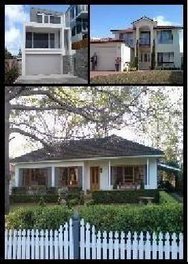
Whenever a house is bought or sold a
home inspection is a common practice that alerts both homeowners and buyers to the condition of the property in question.
When you are in need of a home inspection in New South Wales, you should choose only Licensed inspectors that hold current Professional Indemnity Insurance. A simple check can be made through the
Office of Fair Trading website to see if the inspector you choose is licensed or not.
Home inspectors will enter a home and analyse all of the major components that make up a house purchase. This is a valuable tool for both buyers and homeowners. Buyers will be able to make informed decisions on making an offer on a piece of property. Homeowners will know the sort of repairs or enhancements that their home needs in order to secure a sale. Home inspection companies will assess the overall condition of a home. Visual tools are used to make the assessments.
Home inspection visits usually take between 1 and 3 hours in order to arrive at a proper assessment. Depending on how old or large a house is, it may take longer or less time to complete. Homebuyers will truly benefit from attending the inspection. Although a written report is furnished upon completion, it doesn't compare to the hands-on, up-front experience of going through the house with the home inspection representative.
Requirements of a Home Inspection Representative
Your home inspector should have a working, extensive knowledge of all the important structural element of a home. They should also have a general knowledge of the electrical and plumbing systems. The roof and attic area will be inspected, as well as all of the interior and exterior structures, including the condition of the walls.
A home inspection representative will have taken courses to provide you with a proper analysis, as well as possess the necessary tools to complete inspections. These home inspection assessments can be used to gauge the amount of money it will take to conduct repairs on a new home purchase. All of the gathered information is taken into account when placing a real estate offer. Qualified home inspectors are able to detect the flaws of a home that are not easily recognizable to the untrained eye. Below, you will find what to expect when an home inspector conducts a review of the inner and outer areas of a house:
Plumbing: While conducting a home inspection, old piping materials, faulty fixtures, water pumps and water heaters are some of the concerns that an inspector will focus on. Plumbing defects can be costly issues a homeowner and/or buyers will face in terms of repairs.
Roofs: A home inspection company will check a roof to see if there are any any leaks tile issues or potential leaks. Homeowners can gauge whether or not a roof should be replaced.
Structural Damage: The overall condition of main structures in the house is also analyzed during a home inspection. Foundation walls are looked at. Floor joists and rafters are of importance, as are window and door headers. Older houses are checked for sagging and settlement issues.
Electrical Wiring: During a home inspection, the condition of the electrical wiring throughout the house is a concern. Wire connections and power overload prevention are some of the aspects an inspector will take note of.
Water in the Basement: When water has entered the basement or crawl space of a home, a host of property problems are soon to follow. This includes fungal decay or termite attack. Home inspectors are especially keen on detecting these problems, which are quite visible through discoloration, musty smells, mildew and water leak stains.
Choosing an Home Inspection company
The average fee for a Pre-Purchase Building Inspection is between $300 to $800 and and an additional $200 to $300 for a Timber Pest Inspection, but the information received from an inspector is priceless. It could be the turning point between a sale and a buyer going back to searching for the perfect home. The number of home inspection representatives is vast. Some inspectors are qualified to do both Building and Pest Inspections which should save you some money. There are home inspectors that offer significantly lower prices, but you must beware that a number of unlicensed inspectors are operating all over the state. The licensing requirement has been in operation for over three years now however there has not been a concerted effort by the Office of Fair Trading to inform the public of the fact.
The best way to determine their competence is to request references or sample reports. Sometimes contacting past clients will give you insight as to how capable a potential home inspector is. When you are ready to begin your search, keep the following questions on hand:
1) How long have you been in the home inspection business?
2) How many home inspections have you completed?
3) What qualifications do you possess?
4) How long does it take for you to inspect a home?
5) How much do your services cost?
6) Can I come along with you on the inspection?
7) Can you approximate costs for potential repairs if requested?
8) What are the hours and days of your availability?
9) Can you provide references of inspections you have done in the past?
10) What is your Building Consultancy License number?





